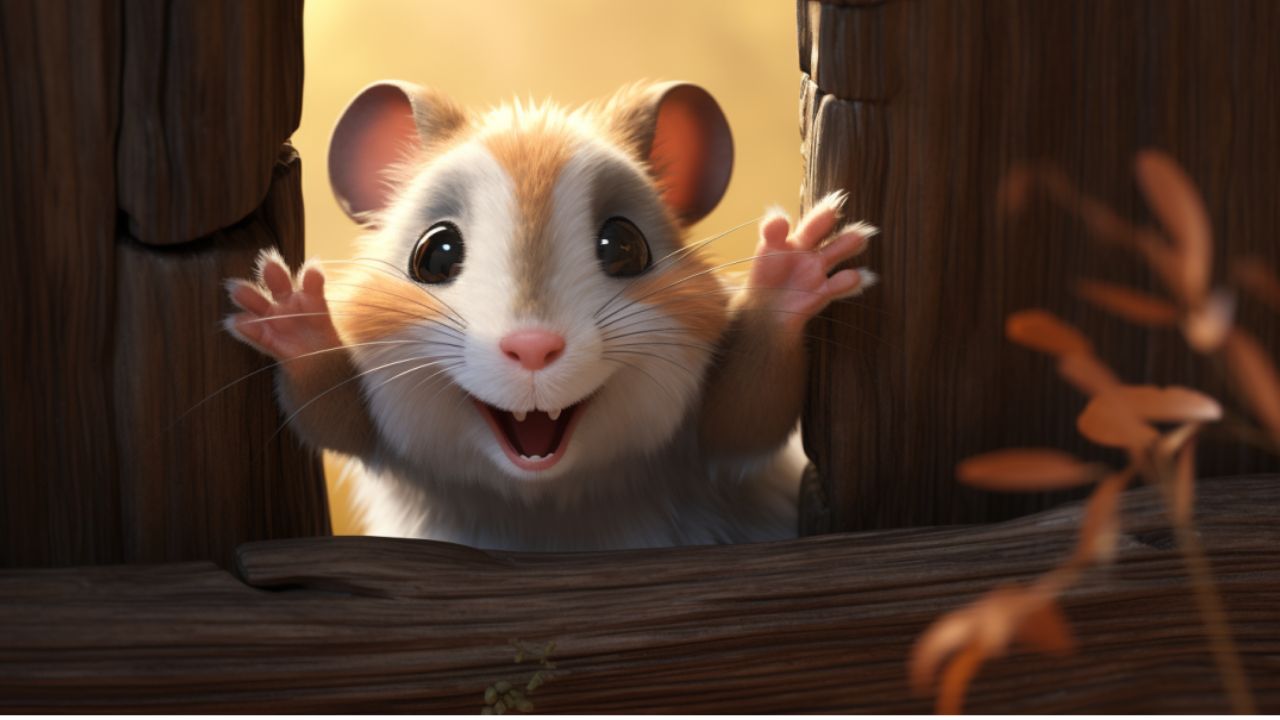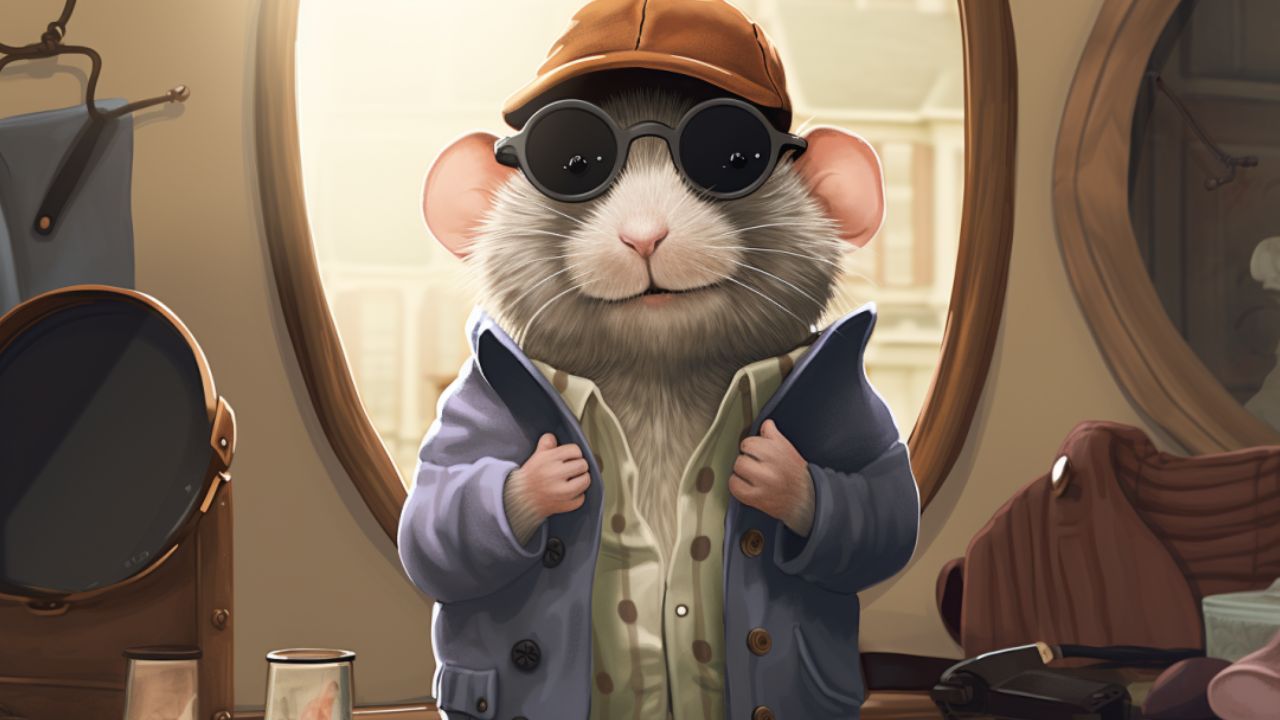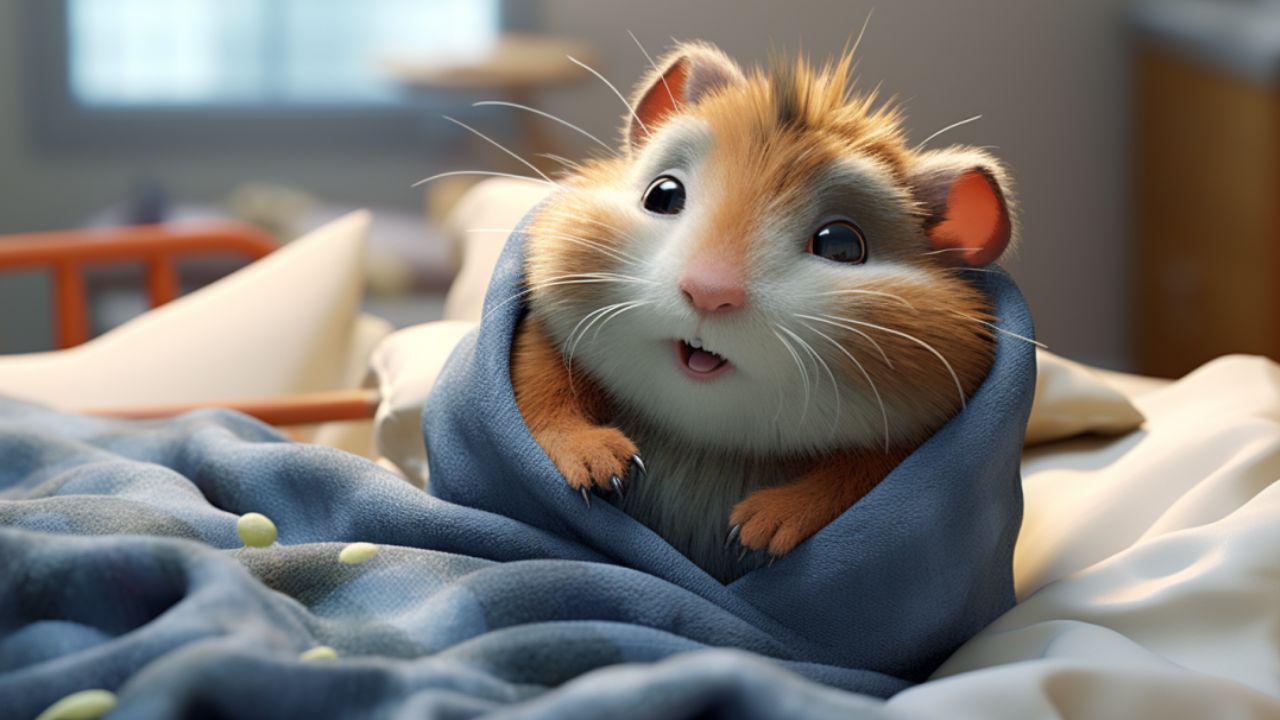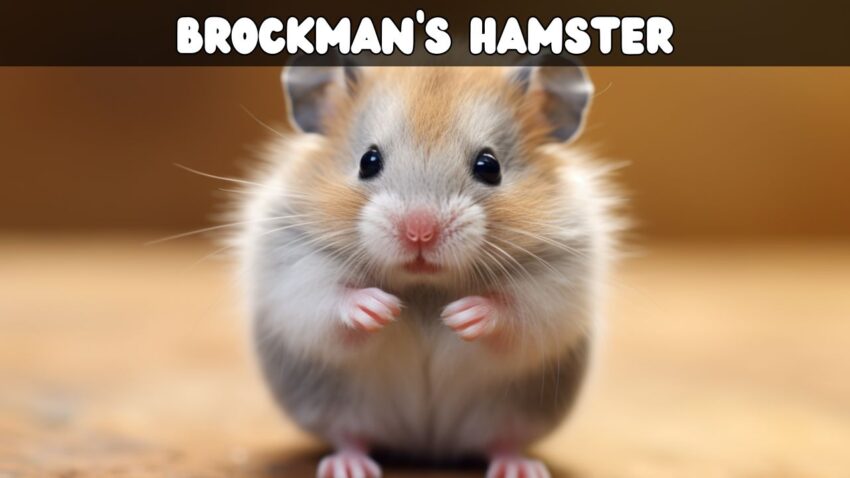The world of hamsters is as varied as it is enchanting, and nestled within its confines is the Brockman’s Hamster, a species that sparkles with its own unique charm. Whether you’ve come across this name in passing, own one of these delightful rodents, or are simply expanding your knowledge horizon, understanding the Brockman’s Hamster can be both intriguing and enlightening.
The Spectrum of Brockman’s Hamster Information this Article Offers
Brockman’s Hamster has a tale that goes beyond its fluffy exterior and endearing eyes. This article aims to be your comprehensive guide, exploring every facet of this species. From its natural habitat and distinct physical characteristics to its behavioral traits and health considerations, we’ll delve deep. Curious about their diet or pondering over the ideal living conditions? We’ve got that covered too. By the end, you’ll not only have gained a wealth of knowledge but also, hopefully, a profound appreciation for the Brockman’s Hamster and its place in the vast rodent kingdom.
Overview

The captivating world of rodents presents an array of fascinating species, each carving out its own niche within the vast tapestry of nature. Amid this diversity stands the Brockman’s Hamster, a lesser-known gem with a story worth telling. In this section, we shall unearth the rich history, evolving presence, and significance of Brockman’s Hamster, setting the stage for a deeper exploration in subsequent sections.
Brockman’s Hamster: Unraveling the Mystery
Brockman’s Hamster, while not as immediately recognizable as some of its counterparts, boasts a unique blend of characteristics that make it stand out. Originating from specific regions which we’ll delve into later, they’ve evolved over millennia to adapt to various environmental challenges. Their compact bodies, agile movements, and instinctual behaviors reflect a deep-rooted connection to their ancestral habitats. Not just another hamster, the Brockman’s presents a testament to nature’s remarkable ability to shape species in response to the world around them.
From Wild Territories to Modern Homes: Their Presence Explained
It’s not just the wild terrains that these hamsters have conquered. As human curiosity about diverse pet species grew, the Brockman’s Hamster began its journey from the remote wilderness into domesticated environments. Pet enthusiasts, always on the lookout for unique additions to their collection, quickly recognized the potential of Brockman’s Hamster. Their manageable size combined with a temperament that strikes a balance between independence and sociability makes them an ideal pet for those willing to understand and cater to their specific needs. Over time, the Brockman’s Hamster transitioned from being an obscure wild rodent to a cherished companion in homes worldwide, showcasing its impressive adaptability and resilience.
Natural Habitat

When venturing into the world of Brockman’s Hamster, understanding the intricate details of its natural habitat offers a lens through which we can appreciate its evolution, behavior, and specific needs. This section seeks to shed light on the native terrains and climates that Brockman’s Hamster has masterfully navigated, offering insights into the environment that has so profoundly shaped them.
Journeying into the Native Lands of Brockman’s Hamster
To truly understand the Brockman’s Hamster, one must first traverse its native lands. Tucked away in specific pockets of the world, these areas have molded the Brockman’s Hamster into the fascinating creature it is today. The landscapes they inhabit are not just backdrops; they are integral components of their daily lives, dictating everything from their dietary choices to their reproductive patterns. Rolling meadows, rocky outcrops, and dense undergrowth might be characteristic features of their homeland, providing both shelter from predators and abundant sources of food.
The Environmental and Climatic Blueprint of their Home
Brockman’s Hamsters are products of their environment, and the climate they hail from plays a pivotal role in this. These hamsters have acclimated to specific temperature ranges, humidity levels, and seasonal changes that not only affect their daily routines but also their long-term survival strategies. Whether they’re enduring the chilly embrace of winter or basking in the moderate warmth of summer, each climatic shift presents its own set of challenges and opportunities. Rainfall patterns, day-night temperature fluctuations, and seasonal shifts have all left indelible imprints on the Brockman’s Hamster’s physiological and behavioral traits, making them the resilient and adaptable rodents that many have come to admire and love.
Physical Characteristics

The Brockman’s Hamster, much like an intricately painted canvas, displays a host of physical features that make it stand out in the vast family of rodents. Its size, fur texture, and coloration are not mere aesthetics but are, in fact, the results of generations of evolution adapting to specific environments and challenges. Let’s delve deeper into the myriad of physical attributes that define this unique hamster.
Painting a Picture: The Physical Traits of Brockman’s Hamster
The first thing one might notice about the Brockman’s Hamster is its compact size, making it one of the smaller species within the hamster family. Its fur, a medley of soft browns, creams, and grays, offers it both camouflage against predators and warmth during colder months. The eyes, alert and inquisitive, are complemented by large, perky ears that pick up the faintest of sounds, aiding in its survival in the wild. Its whiskers, always twitching, help navigate tight burrows and detect nearby movements, while the stubby tail and sturdy paws are perfect for both digging and gripping onto surfaces.
Behind their Appearance: Understanding their Bodily Features
But beyond the surface, each feature of the Brockman’s Hamster serves a distinctive purpose. Its compact size, for instance, allows it to quickly dart into burrows and evade predators. The dense fur isn’t just for show; it provides an insulating layer that keeps the hamster warm during the chilly nights and protects against the sun’s heat during the day. Furthermore, its sharp incisors, ever-growing, are perfectly designed to gnaw on a variety of foods, from seeds to small insects. The strong hind legs are built for bursts of speed when escaping threats or chasing after prey. In essence, every aspect of the Brockman’s Hamster’s physique is a testament to nature’s incredible ability to craft creatures perfectly suited to their environments and lifestyles.
Behavior and Temperament

Brockman’s Hamsters are not just bundles of fur; they are creatures of habit, intelligence, and unique temperament. Their behavior can often be a source of intrigue for hamster enthusiasts and owners alike. These tiny mammals, with their distinct personalities, display a spectrum of behaviors that make them stand out from their rodent relatives. By understanding their temperament and the reasoning behind specific behaviors, we can appreciate the Brockman’s Hamster in all its complexity.
Decoding the Brockman’s Hamster’s Personality
At first glance, a Brockman’s Hamster might come across as timid and reserved, often scurrying away to the safety of its burrow at the slightest disturbance. However, with time and patience, they can reveal a more inquisitive side, showing interest in their surroundings and the people in their lives. Social dynamics play a significant role in their lives, with hamsters establishing hierarchies and territories in shared spaces.
Regular activities include foraging for food during dusk, meticulous grooming sessions, and burrow maintenance. Their nighttime activities underscore their crepuscular nature, being most active during the twilight hours. This behavior, evolved from their need to avoid daytime predators, remains intact even in domesticated settings.
What Sets Them Apart? Unique Traits and Behaviors Explored
What makes the Brockman’s Hamster truly captivating is its set of unique behaviors not commonly observed in other hamster species. For instance, their ability to stand on their hind legs for extended periods while scanning their environment is both adorable and functional, allowing them a broader view of potential threats and food sources. Another endearing trait is their propensity to store food in cheek pouches, sometimes to comical proportions, before stashing it away safely in their burrows for later consumption.
These hamsters also display intricate communication methods, such as specific vocal chirps and body postures, to convey different emotions and intentions to fellow hamsters. Such behaviors not only highlight their intelligence but also underscore the importance of social interactions in their lives.
Understanding and respecting these unique behaviors can greatly enhance the bond between the Brockman’s Hamster and its caregiver, fostering a relationship built on trust and mutual appreciation.
Diet and Nutrition

Every creature on this planet has evolved specific dietary habits to maintain its health, growth, and overall vitality. The Brockman’s Hamster is no exception. With its diverse range of foods that cater to its nutritional needs, this small mammal has a culinary preference that might surprise many. To ensure the optimal well-being of a Brockman’s Hamster, understanding its dietary inclinations and nutritional necessities is paramount.
The Brockman’s Hamster’s Culinary Choices
Native to arid regions, the Brockman’s Hamster’s natural diet primarily consists of seeds, grains, and small insects. In the wild, these hamsters often forage for a mix of millet, sunflower seeds, and occasional crickets or mealworms. Their sharp, ever-growing incisors are perfectly suited for gnawing on harder seeds, breaking them down into digestible pieces.
Fresh vegetables and fruits can also be a part of their diet but should be given in moderation. Some of their favorites might include cucumber, apple slices (without seeds), and broccoli. However, it’s essential to be cautious and avoid feeding them toxic or harmful foods such as citrus fruits, onions, and chocolate.
The Nutritional Map: What Keeps them Healthy
Just like humans, Brockman’s Hamsters require a balanced diet that caters to their specific nutritional requirements. The staples of their diet, such as seeds and grains, provide them with essential carbohydrates and some proteins. However, the addition of insects to their diet provides them with animal protein, vital for muscle development and repair.
Vitamins and minerals are equally important. Fresh vegetables and fruits can supply a host of necessary vitamins like vitamin C, A, and various B vitamins, which are essential for their immune system, vision, and metabolic processes.
Calcium is another critical nutrient for these hamsters, contributing to robust bone health. This can be sourced from calcium-rich vegetables or specially designed mineral blocks available in pet stores.
To prevent obesity and related health issues, it’s vital to regulate their food intake and ensure they’re not overfed. A regular check on their weight and monitoring their food consumption can help in maintaining their optimal health.
In conclusion, understanding the dietary habits and nutritional needs of the Brockman’s Hamster is the first step to ensuring they lead a healthy and fulfilling life. It’s a balance of providing them with their favorites while ensuring they receive all the essential nutrients they require.
Housing and Environment

Brockman’s Hamsters, like all creatures, flourish best when their living conditions mimic, as closely as possible, the environments they naturally inhabit. For these delightful rodents, a thoughtfully constructed habitat can significantly affect their happiness, health, and lifespan. Therefore, diving deep into their natural habitat’s intricacies and then recreating it as faithfully as possible is the first step towards becoming a responsible Brockman’s Hamster owner.
Building a Haven for Brockman’s Hamster
The first and foremost consideration is the cage’s size. A Brockman’s Hamster requires ample space to explore, play, and carry out its natural behaviors like burrowing. A minimum cage size of 24 inches in length, 12 inches in width, and 12 inches in height is recommended. Bigger is always better, as this allows for ample movement and the addition of various accessories.
The material of the cage is also a pivotal decision. While wire cages ensure good ventilation, they should have a solid base to protect the hamster’s feet. Plastic habitats can be another option, offering a labyrinth of tunnels and chambers reminiscent of the burrows these hamsters would create in the wild.
Bedding is crucial for their well-being. Opting for unscented, paper-based bedding is often the best choice. It’s absorbent, comfortable for the hamster, and safe if ingested. A depth of at least 2 inches allows them to indulge in their natural burrowing instincts.
Key Environmental Components for their Well-being
Beyond the basics of cages and bedding, Brockman’s Hamsters benefit from an environment enriched with toys and exercise opportunities. A sturdy, appropriately-sized exercise wheel is indispensable, allowing them to satisfy their innate need to be on the move.
Additionally, toys like chew sticks, tunnels, and ladders keep them engaged, mentally stimulated, and physically active. Such toys not only entertain but also play a pivotal role in ensuring their dental health and muscle development.
Temperature and humidity are two critical environmental factors to monitor. A temperature range of 65°F to 75°F and a humidity level between 40% to 60% mirrors their natural habitat conditions.
Lastly, a quiet, stress-free location for the cage, away from direct sunlight, loud noises, and potential predators, contributes to a safe and peaceful haven for your Brockman’s Hamster.
In wrapping up this section, it’s clear that creating the perfect home for a Brockman’s Hamster is a blend of practical considerations and a deep understanding of their natural inclinations. A well-set environment ensures they thrive, remaining active, healthy, and contented throughout their lives.
Health and Wellness

Ensuring the health and wellness of Brockman’s Hamster requires vigilant observation, a structured routine, and a proactive approach to prevention. While these little creatures are hardy and adaptable, they aren’t immune to certain health challenges. A well-informed owner can make all the difference in spotting early signs of distress and providing timely interventions.
Guarding Brockman’s Hamster’s Health: Common Issues and Prevention
Like many small rodents, Brockman’s Hamsters are prone to a few common health issues:
- Respiratory Infections: Caused by bacteria or viruses, symptoms can include sneezing, wheezing, and nasal discharge. Keeping the cage clean, ensuring it’s not in a drafty location, and regularly changing the bedding can help prevent these infections.
- Wet Tail: A severe diarrheal disease often caused by stress, changes in diet, or bacterial infections. Keeping stress levels down, introducing new foods gradually, and maintaining cleanliness are essential preventive measures.
- Dental Issues: Their teeth grow continuously. If they don’t have adequate materials to gnaw on, they can suffer from overgrown teeth, making eating difficult. Regularly providing chew toys can prevent this.
- Tumors: Older hamsters might develop benign or malignant growths. Regular check-ups and early detection are crucial.
- Parasitic Infestations: Mites, lice, or internal parasites can infest your hamster. Keeping the cage clean and consulting a vet at the first sign of scratching or digestive disturbances is essential.
Prevention often centers around maintaining a clean habitat, providing a balanced diet, and minimizing stress. Regularly observing your hamster’s behavior, appetite, and physical appearance can help you detect anomalies before they escalate.
The Veterinarian’s Handbook: Signs to Watch For
Awareness is the first line of defense when it comes to the health of Brockman’s Hamster. Here are some signs that should prompt a visit to the veterinarian:
- Sudden changes in behavior or lethargy.
- Loss of appetite or difficulty in eating.
- Abnormal breathing or discharge from the nose or eyes.
- Unusual lumps or growths on the body.
- Bald patches, sores, or signs of scratching.
- Difficulty in movement, limping, or paralysis.
- Abnormal feces or signs of diarrhea.
It’s recommended to have regular vet check-ups, at least once a year, for a general health assessment. Additionally, having a vet who specializes in small animals or exotics can be invaluable.
To sum up this section, while Brockman’s Hamsters are relatively low-maintenance pets, their health and wellness should never be taken for granted. A combination of regular care routines, vigilance, and swift action can ensure a long, happy, and healthy life for these adorable creatures.
Breeding

The breeding process for hamsters is not just a matter of bringing two animals together. When considering Brockman’s Hamster, specific nuances and care guidelines ensure the health and well-being of both the parents and the offspring. An understanding of their reproductive landscape, coupled with a commitment to ethical breeding practices, can ensure that breeding is carried out responsibly.
The Reproductive Landscape of Brockman’s Hamster
Brockman’s Hamsters, like many of their rodent cousins, can have a relatively short gestation period. Here’s a glimpse into their reproductive journey:
- Maturity: Brockman’s Hamsters typically reach sexual maturity at a few months of age. It’s essential to recognize this to prevent unplanned breeding, especially if keeping males and females together.
- Estrous Cycle: Female Brockman’s Hamsters come into heat every four days or so. During this time, they may be more receptive to a male partner.
- Gestation and Birth: After successful mating, the gestation period can last anywhere from 16 to 20 days. The female will give birth to a litter that can range from a few to several pups. It’s crucial to provide a quiet, stress-free environment for the female during this period.
- Post-Birth: Newborn Brockman’s are blind, deaf, and hairless. They depend entirely on their mother for warmth and nutrition. After a few weeks, they’ll begin to open their eyes, develop fur, and start eating solid food.
Breeding with Care: Ethical Considerations and Guidelines
Breeding Brockman’s Hamster requires more than just understanding their biological processes. It demands responsibility and ethical considerations:
- Purpose of Breeding: Breeding should never be done on a whim or purely for commercial purposes. Instead, breeders should have a clear goal in mind, whether it’s for preservation of the species, improving certain traits, or educational purposes.
- Health Checks: Before breeding, both male and female hamsters should undergo health checks to ensure they are free from genetic disorders or communicable diseases.
- Age Considerations: Only hamsters of optimal breeding age should be paired. Too young, and you risk the health of the mother and pups. Too old, and there could be complications.
- Environment: The breeding environment should be calm, spacious, and clean. It’s also a good practice to separate the male from the female after mating to give her peace during the gestation period.
- Avoid Inbreeding: Inbreeding can lead to genetic disorders and health issues in the offspring. Always ensure a diverse genetic pool when considering breeding partners.
- Responsibility for Offspring: Breeders must take responsibility for the offspring. This includes ensuring they are well-cared for, properly socialized, and finding them responsible homes when they’re ready.
In conclusion, breeding Brockman’s Hamsters is a commitment that should not be taken lightly. A blend of knowledge, preparation, and ethical considerations can ensure the process is both rewarding and beneficial for the hamsters involved.
FAQs

Every species of hamster brings with it unique questions from enthusiasts and potential pet owners. Brockman’s Hamster, with its distinct characteristics and behaviors, is no exception. This section aims to shed light on some of the most frequently asked questions about this particular hamster species.
Brockman’s Hamster Queries Answered
- How big do Brockman’s Hamsters get?
While individual sizes can vary, Brockman’s Hamsters typically reach a length of X to Y inches when fully grown. It’s essential to note that their size can depend on factors such as genetics, diet, and overall health. - How long is the average lifespan of a Brockman’s Hamster?
With proper care, a Brockman’s Hamster can live anywhere from Z to W years. This lifespan can be influenced by factors such as diet, exercise, genetics, and living conditions. - Are Brockman’s Hamsters nocturnal?
Like many hamster species, Brockman’s Hamsters are primarily nocturnal. This means they are most active during the night and prefer to rest during daylight hours. - What kind of bedding is best for them?
Brockman’s Hamsters thrive on bedding made of paper or aspen shavings. Cedar and pine shavings should be avoided due to their aromatic oils that can be harmful to hamsters. - Do they prefer solitary or communal living?
It’s essential to understand the specific social needs of Brockman’s Hamsters. Generally, they prefer solitary/are amicable with fellow hamsters, but always monitor their behavior to ensure there are no signs of stress or aggression.
Shedding Light on Frequent Concerns for Enthusiasts
- Can Brockman’s Hamsters be trained?
While they have a wild streak, with patience, you can indeed train a Brockman’s Hamster to do simple tasks or recognize their name. - Are they prone to specific illnesses?
Like other hamsters, they can be prone to conditions like wet tail, respiratory issues, or tumors. Regular vet check-ups and a keen eye on any behavioral or physical changes can ensure early detection and treatment. - Do they need exercise wheels and toys?
Absolutely! Exercise wheels are crucial for Brockman’s Hamsters to maintain their health and prevent obesity. Toys, tunnels, and chew sticks also play a pivotal role in their mental stimulation and dental health. - Is a specific diet recommended for them?
A balanced diet for Brockman’s Hamsters includes high-quality hamster pellets, fresh fruits, vegetables, and occasional protein sources like boiled eggs or mealworms. Always ensure clean water is available. - How do they interact with children or other pets?
Brockman’s Hamsters are generally gentle/agile and swift. While they can be introduced to children, always ensure supervised interaction to ensure the safety of both the child and the hamster. As for other pets, always exercise caution and avoid direct interactions, especially with predatory pets like cats or dogs.
Concluding this section, it’s evident that Brockman’s Hamsters are captivating creatures with their own set of unique requirements and characteristics. For enthusiasts considering bringing one into their home, thorough research, paired with a loving environment, can ensure a joyful experience with these tiny beings.
Reflecting on Brockman’s Hamster

Diving deep into the world of Brockman’s Hamster has been a revealing and enriching journey. These small, often underappreciated creatures, carry with them stories of nature, evolution, and companionship. As we reflect on the plethora of information unveiled about them, let’s tie together the lessons learned and look forward to how we can create a better world for these tiny wonders.
Wrapping Up the Brockman’s Hamster Expedition
As our exploration comes to an end, it’s clear that Brockman’s Hamsters are more than just adorable faces. Their intricate behaviors, habitats, and health considerations weave a narrative of a species that beautifully embodies the diversity of the rodent realm.
A Plea for Awareness and Responsible Hamster Ownership
Being privy to such detailed insights about Brockman’s Hamster brings forth a responsibility. As potential caretakers or simple admirers, we must champion their well-being. If you’re considering making one a part of your family, prioritize their health, happiness, and comfort. And irrespective of ownership, let’s all pledge to spread the word, nurturing a community that’s informed, compassionate, and respectful to these delicate beings.

